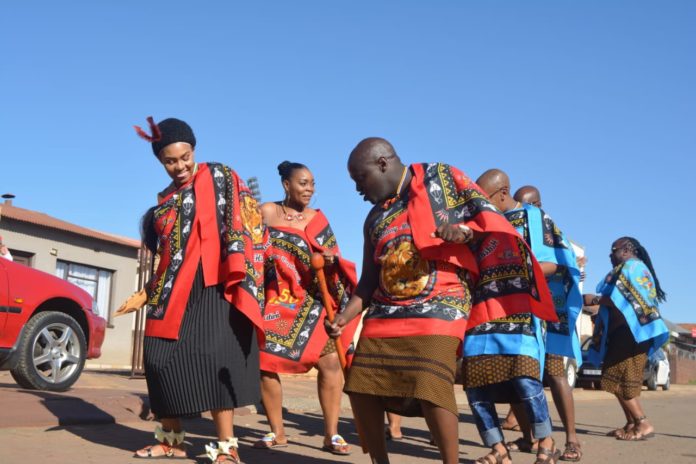The Swati, also known as Swazi, are a people from the southern regions of Africa who maintain a unique identity even to this day.
The Swazi nation is named after Mswati II, who became king in 1839. The royal lineage can be traced to a chief named Dlamini; this is still the royal clan name. About three-quarters of the clan groups are Nguni; the remainders are Sotho and Tsonga.
These groups have intermarried freely. There are slight differences among Swazi groups, but Swazi identity extends to all those with allegiance to the twin monarchs Ngwenyama “the Lion” (the king) and Ndlovukati “the She-Elephant” (the queen mother).
They currently reside mainly in the countries of Swaziland, South Africa and Mozambique. The following is an overview of the Swati people.
Swati Tribe

The Kingdom of Swaziland is officially the “land of the Swati”, but more Swati live in South Africa than in Swaziland. The Swati people originated as a clan in central Africa in the fifteenth century.
They were initially a part of the Nguni tribe. They reached the present day Swaziland in 1750. There, they formed their own political and economic identity. They were once renowned for the export of ivory and had trade relations with the Dutch.
During the period of colonialism, they got into frequent wars with the Zulus but refused any help from the British. Since colonialism, they have been struggling to maintain their unique political, economic, linguistic and cultural identity.
Culture
The Swati people still prefer wearing their colourful, traditional dresses. The Swati society is strongly patriarchal in nature. There is a twist here though. The queen mother can dominate the king.
In fact, selecting the next king is like selecting the next queen mother. Swati society maintains strong class distinctions. There is a distinction made between the status of rural and urban people as well as between the status of clans.
See Also: Tsonga Culture People and Language
The closer to the king, the higher the status of a clan. Swati marriage is seen as a union of two families. There are two types of marriage prevalent in the modern times. One is the western form of civil marriage where polygamy is prohibited and divorce allowed. The other one is the traditional form of marriage.
A traditional marriage is initiated by the request of the mothers of the couple to the fathers of the couple. A dowry is paid for the bride.

For females, the marriage bond is considered to be very strong. When a husband dies and a widow marries again, the children of the new husband are still considered to belong to the first husband.
A traditional household consists of the headman, his wives, unmarried siblings, daughters, and sons with their wives and children. With the exception of daughters, all females within the household are considered outsiders.
Modern families in towns are mostly nuclear families though. Infants were traditionally not considered persons until they were two months old. Parents arranged for socializing with children when they reached the age of three.
Check out: The Truth About Afrikaners
As for dietary habits, the Swati people consider fish to be taboo for all, egg to be taboo for females and dairy to be taboo for wives. In the sphere of religious belief, most Swatis are Christians but most also retain their traditional beliefs in witchcraft, sorcery and traditional healing.
Langauge
The Swati language is a Bantu language of the Nguni group, closely related to Zulu. Swati is one of the two official languages of Swaziland (along with English), and one of the eleven official languages of South Africa.
The four administrative areas of Swaziland each has its own distinct dialect of the Swati language. The Swati language also comes in two variations of styles; One is a royal, aristocratic style spoken in some regions of Swaziland, while the other is a crude style spoken elsewhere.
Xhosa Tribe, Culture and Language
Traditional Attire

Virtually every tribe in Africa and beyond has a traditional attire that is peculiar and unique among its inhabitants. In most tribes, these traditional attires are mostly worn during cultural ceremonies while a handful of tribes wear their traditional attires on a daily basis.
In Swazi, the traditional attire is specific to gender and age group. However, some are strictly worn during specific traditional ceremonies like the Umlanga or the Incwala.
Below is Swazi’s traditional attire for daily use:
Age: Up to 3 months
Both male and female wear only protective medicines.
Age: 3 months to 3 years
Males wear tiny loin skin; females wear nothing or string of beads.
Age: 3 to 8 years
Males wear loin skin; females wear a string of beads and skirt of grass or cloth.
Age: 8 to 17 years
Males wear loin skin and start to wear penis cap
Age: 8 to 15 years
Females wear a skirt of grass or skirt and short toga of cloth, never long; bead necklaces
Age: Unmarried adults
Males wear loin skins and cloth, bead ornaments; females wear a dress of cloth, hair up, but in a small bun.
Age: Married adults
Males wear loin skin, cloths; newly-wedded females wear skin apron and skin skirt, apron worn under the armpits; after the birth of first child raises apron over one shoulder; hair in a bun.
Age: Grandparents
Males wear loin skin, clothes and head ring; females wear goatskin and clothes, hair in a bun.

